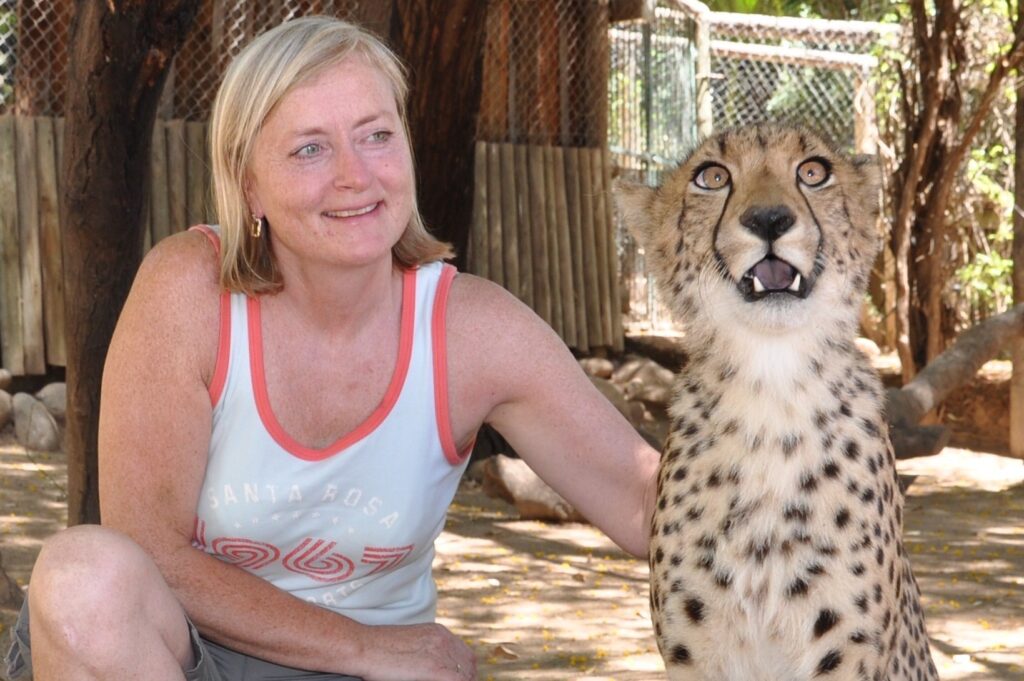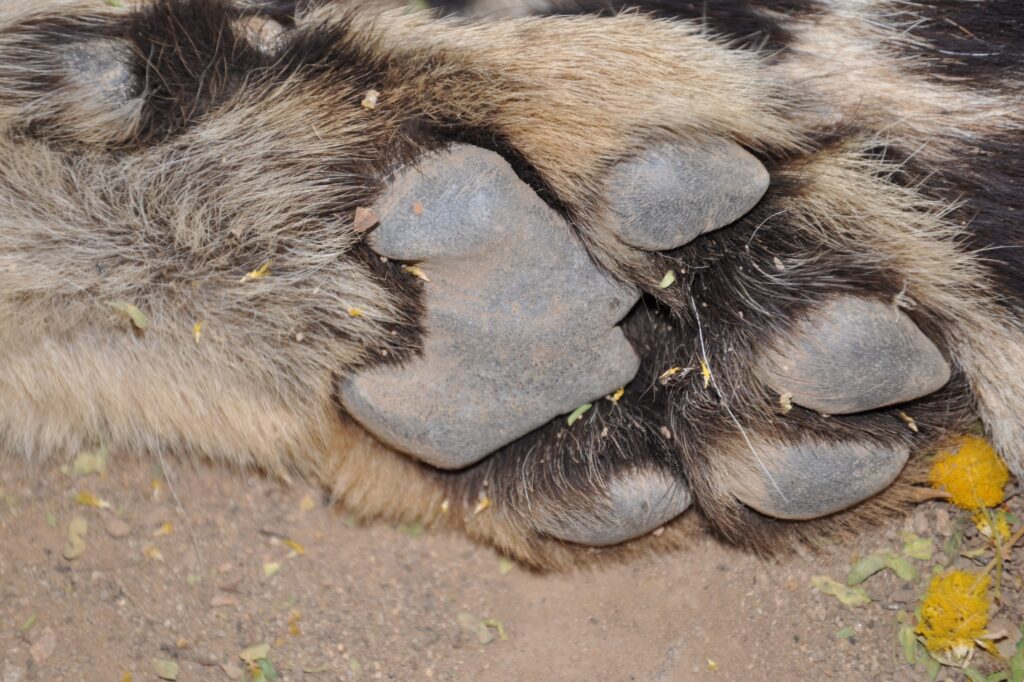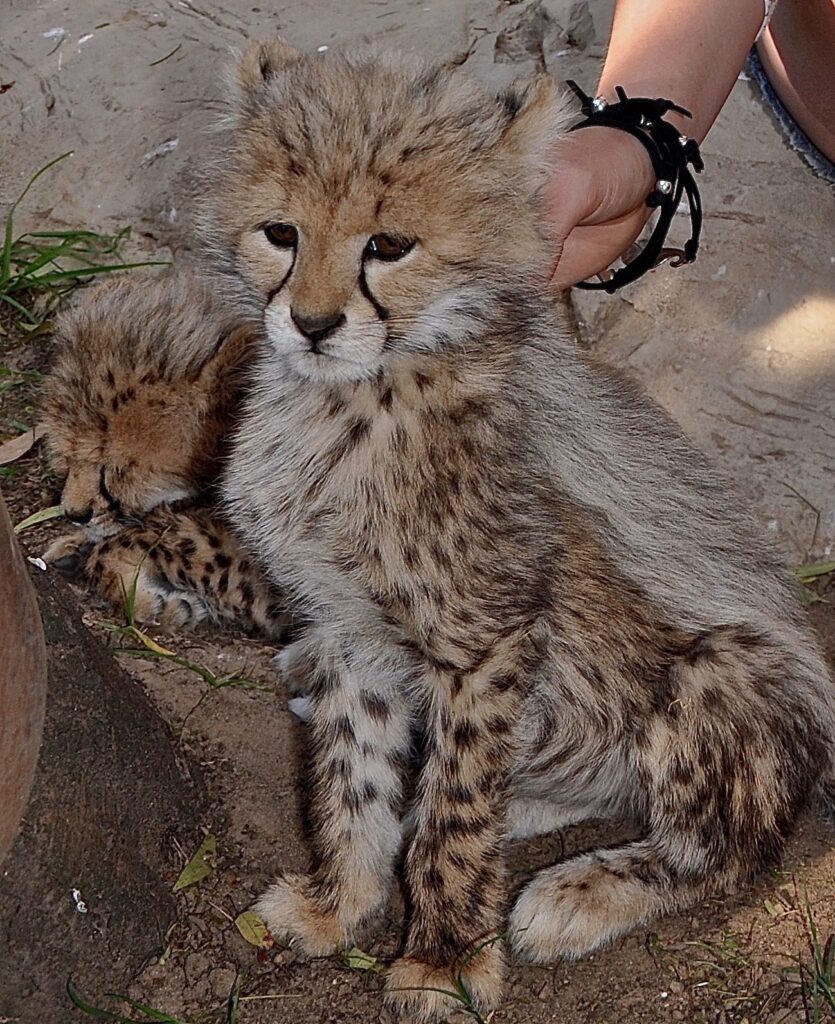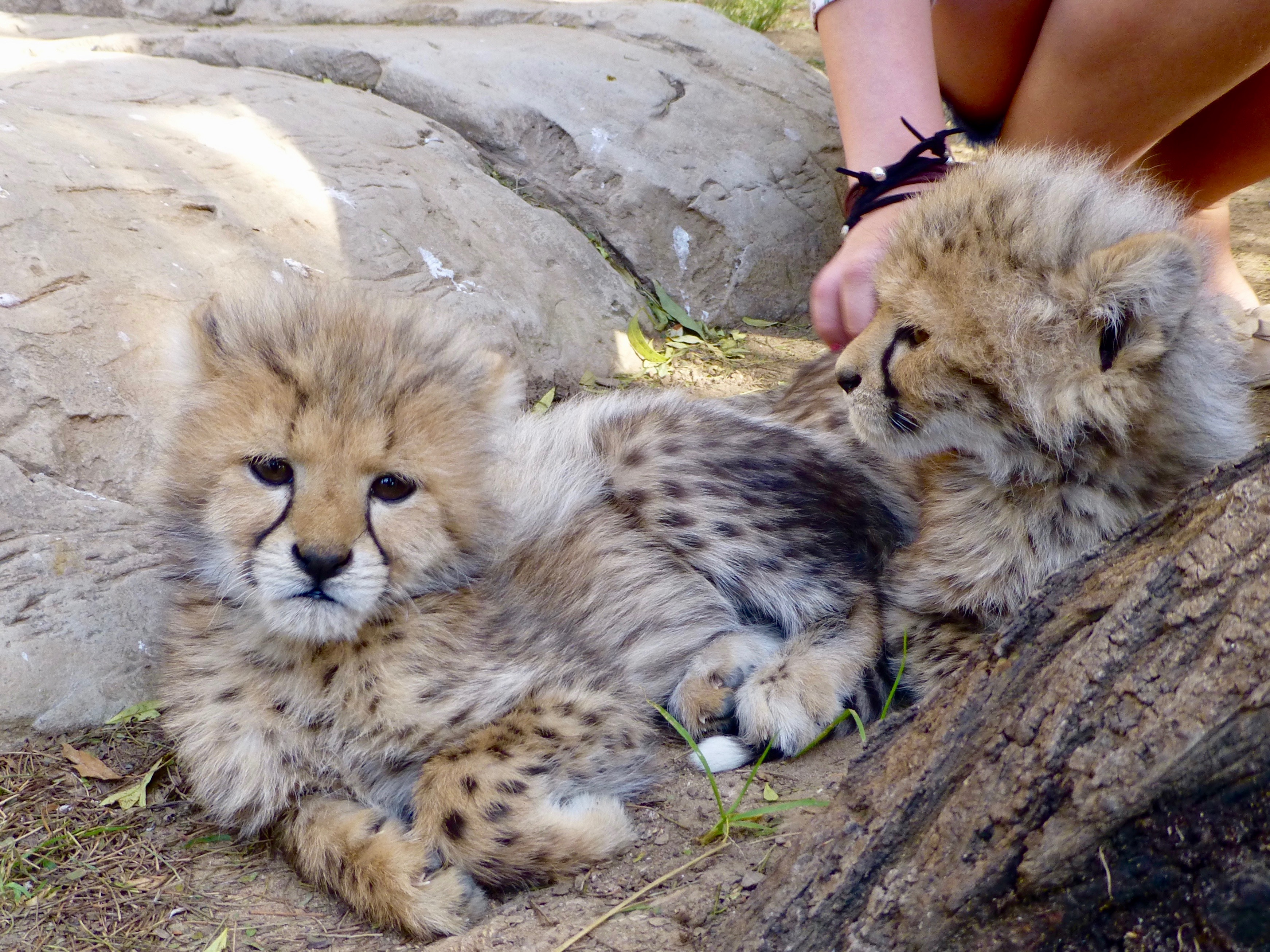The Cheetah is a large, slender cat that lives in sub-Saharan Africa, and in eastern and southern African parks. Cheetahs can also be found in small numbers in southern Algeria, northern Niger and Iran.
The cheetah is the fastest land animal in the world. They can reach a top speed of around 113 km per hour.
They are members of the family Felidae, which includes the tiger, lion, jaguar, leopard, snow leopard, and other big cats.
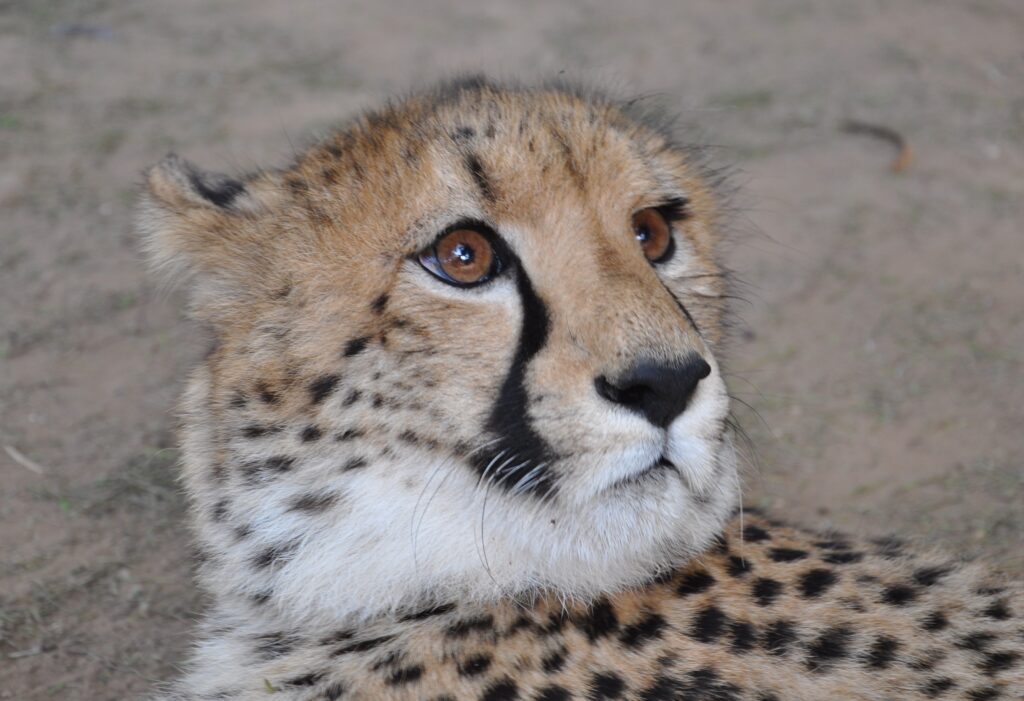
SCIENTIFIC NAME: Acinonyx jubatus
TYPE: Mammals
DIET: Carnivore
SIZE: 112 -150 cm long. TAIL: another 60-80 cm
WEIGHT: 21- 72 kg
LIFESPAN: 10-15 years ( in the wild). Up to 20 years in captivity
Cheetahs and Leopards are both part of the “big cat” family. Many people can not tell them apart, but there are several physical and behavioral characteristics that differ between them.
BODY SHAPE
Leopards are bulkier and stronger. Cheetahs are lighter, but taller, than leopards. Much of the muscles has been sacrificed to make the cheetah streamlined. A very long body, a small, rounded head, a high chest with a thin stomach, and exposed shoulder blades,- a body shape built for speed !
COAT
Cheetah have spots where leopards have rosettes. The spot of a cheetah is a clear, single, black spot separated from the other spots on the cat’s body. A leopard however, has smaller irregular shaped spots that group together in circles to form rosettes.
In both cases, the cat’s spots are used to help camouflage them from other animals, which allows them to get close to their prey before striking.
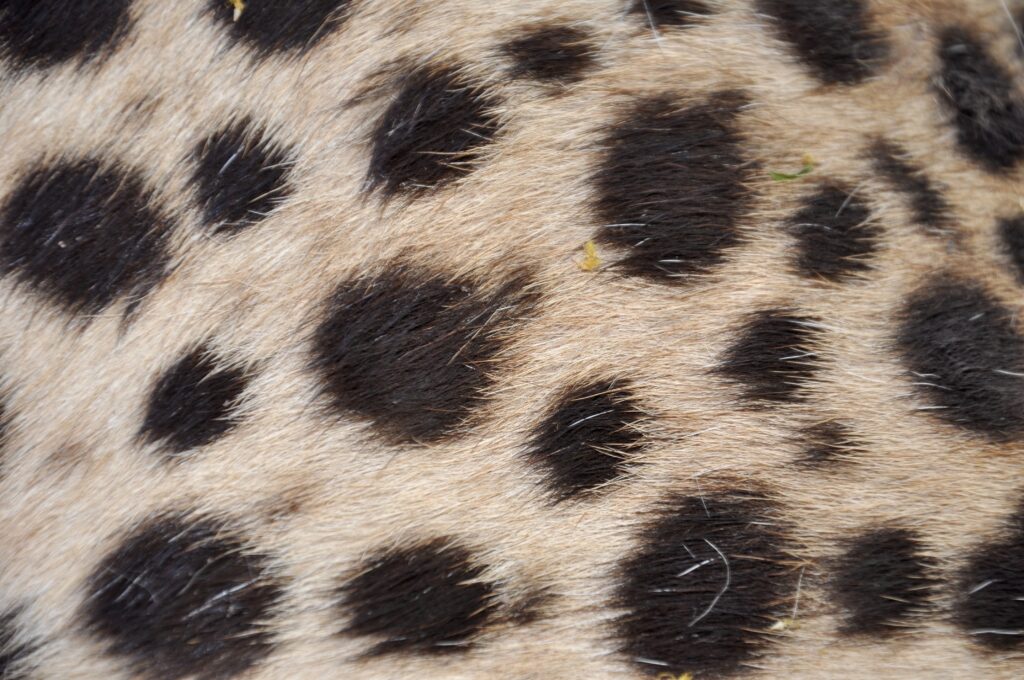
Cheetah – dark spots 
Leopard – rosettes
Whilst a leopards’ face is covered in a continuation of their rosette pattern, cheetahs are immediately identifiable by the black ‘tear line’ that run from the inner corner of their eyes down to the sides of their mouths.
Eye color – Cheetahs have amber eyes, whilst leopards can be anything from bright blue to bright green.
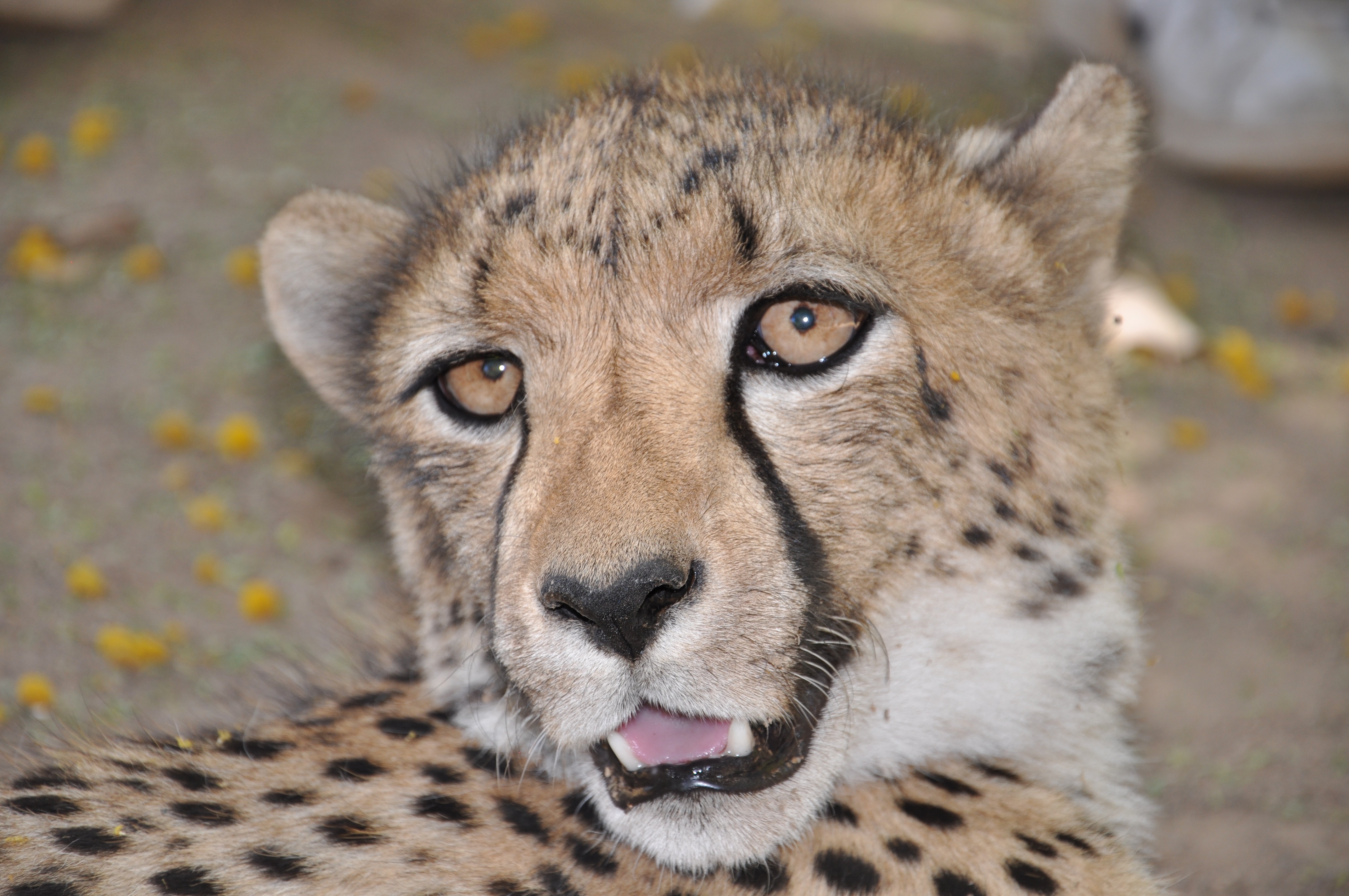
Cheetah – with tear line, and amber eyes 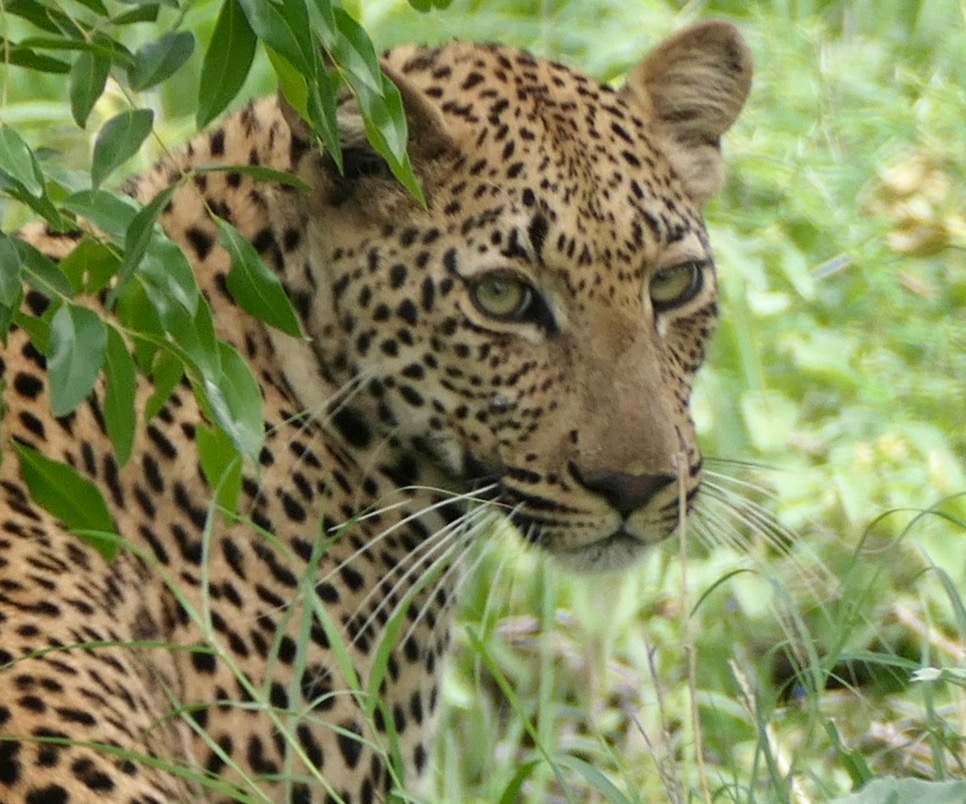
Leopard – green or blue eyes
SHAPE OF THE TAIL
A cheetah’s tail is flat in shape, like a rudder that the cheetah use to steer itself when it’s running at top speeds. A leopard’s tail is much more tubular in shape. The importance of the tail for a leopard is balance, particularly when they’re hoisting carcasses, climbing up and down trees.

HUNTING
Cheetahs hunt during the day, while leopards hunt at night.
After a kill, cheetahs typically drag their prey across land to a secluded area to eat. They need to eat fast because they do not have the strength or size to fight off predators that will try to steal their food (like lions or hyenas). While leopards use their muscular bodies to drag their prey into trees where it is assured safe from other predators.
HABITAT
Although both cats can be found in overlapping terrain, because of their different hunting behaviour cheetah and leopard tend to favour fairly different habitats.
Cheetah need large open spaces to safely complete a hunt at top speed, so are often found in wide grasslands and savannas. Leopards, on the other hand, hunt by stalking and camouflage, so tend to prefer thicker vegetation and more densely covered areas such as forests, woodlands, and scrub, where it’s easier for them to hide.
Other cheetah facts:
SOCIAL ORGANISATION
Most big cats (except lions) are relatively solitary animals. They prefer to be on their own except when mating or raising their young. Cheetahs are are a little of both. Female cheetahs are mostly solo creatures. They only pair up to mate and then stick with their cubs while they are raising them. Some males are territorial, and group together for life forming coalitions that collectively defend a territory which ensures maximum access to females. A coalition will consist of brothers born in the same litter who stayed together after weaning, but biologically unrelated males are often allowed into the group. Males in a coalition are affectionate toward each other, and have equal access to kills when the group hunts together.

- Cheetahs sound more like your average house cat. They meow and purr.
- Females usually give birth to between two to eight cubs at a time. She nurses her youngsters in a lair hidden by tall vegetation, until they are 16 to 24 months old and able look after themselves.
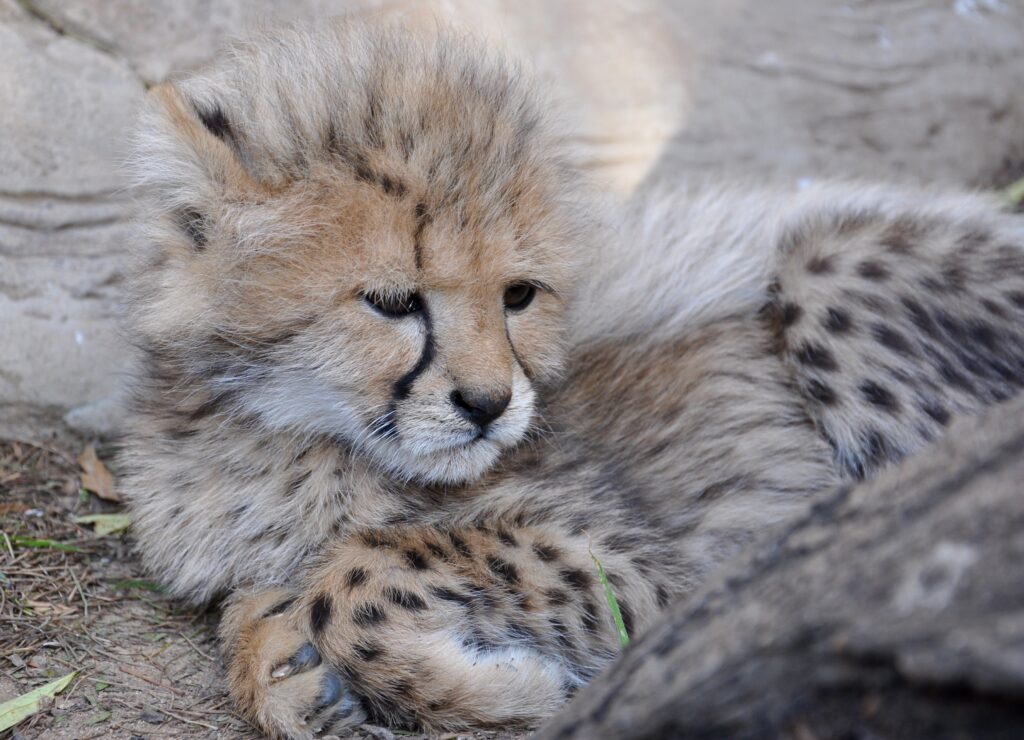
- Due to their speed, the average time it takes a cheetah to catch its prey is about 20 seconds. They normally stalk their prey until they are about 20 feet away
- Cheetahs only need to drink once every three to four days.
- Cheetahs are endangered and could be gone forever in less than 20 years, largely due to human conflict and habitat destruction.
- International Cheetah Day is – 4th December. Cheetah Conservation Fund (CCF) declared this day in 2013 – to raise awareness about the plight of the most endangered cat in Africa.
The wild cheetah population has decreased 90% in just over 100 years, from 100,000 in 44 countries at end of the 19th century to approximately 10,000 today found in 23 African countries, with a small group (approximately 70) in Iran.
ENOUNTER WITH A CHEETAH
At my second roundtrip to South Africa, I had my first encounter with a cheetah. It was at the Cango Wildlife Ranch in Oudtshoorn. This ranch has worked tirelessly for the conservation of cheetah and other endangered species for about 30 years. The Cango Wildlife Ranch is one of the 5 biggest cheetah centres in the world and have for many years had the highest survival rate of cubs produced globally.
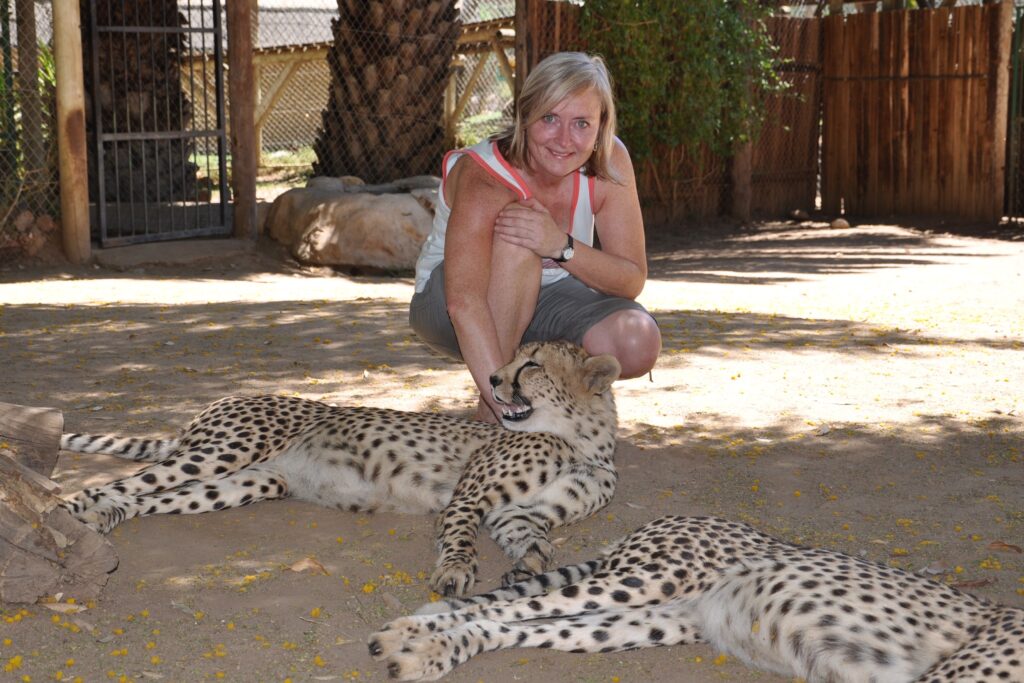
This visit to the Cango Wildlife ranch was in 2010 when my daughter was only 8 years old. She was too young to be allowed to meet cheetahs and was very disappointed of this.
At a later visit to the ranch, then my daughter was 12 years, she at least got the chance to interact with some cheetah cubs:
More cheetah moments – with links to more photos and the story behind, told in other sites:
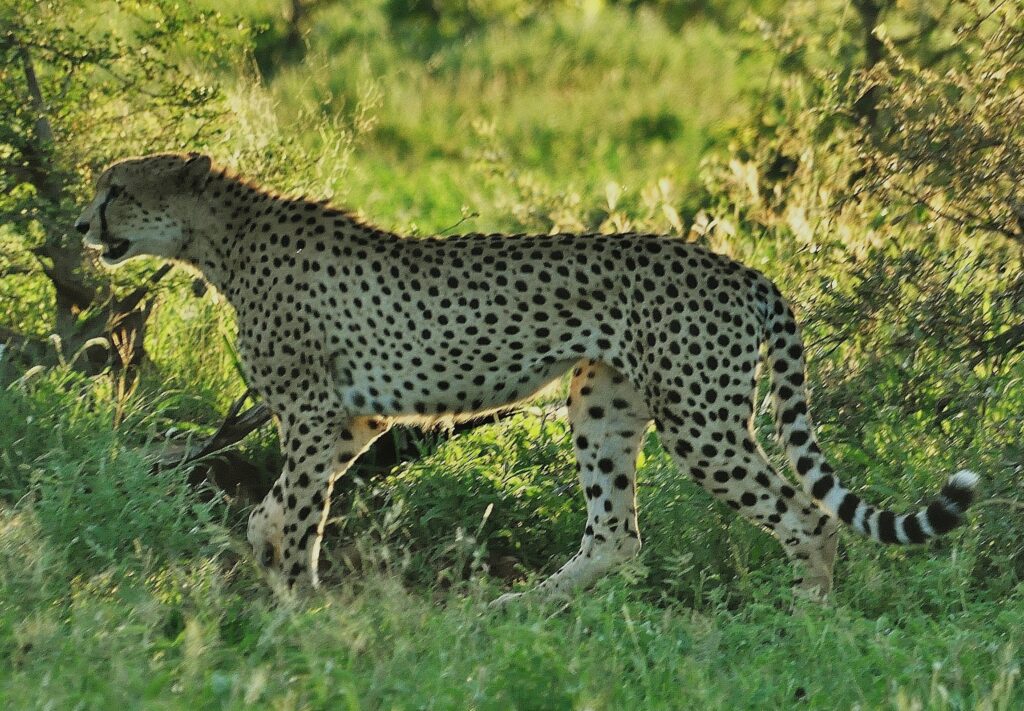
First time at spotted a cheetah at a safari

Watching one cheetah walking alone along a road in the Kruger National Park

Meeting three cheetah males – in Karongwe Private Game Reserve
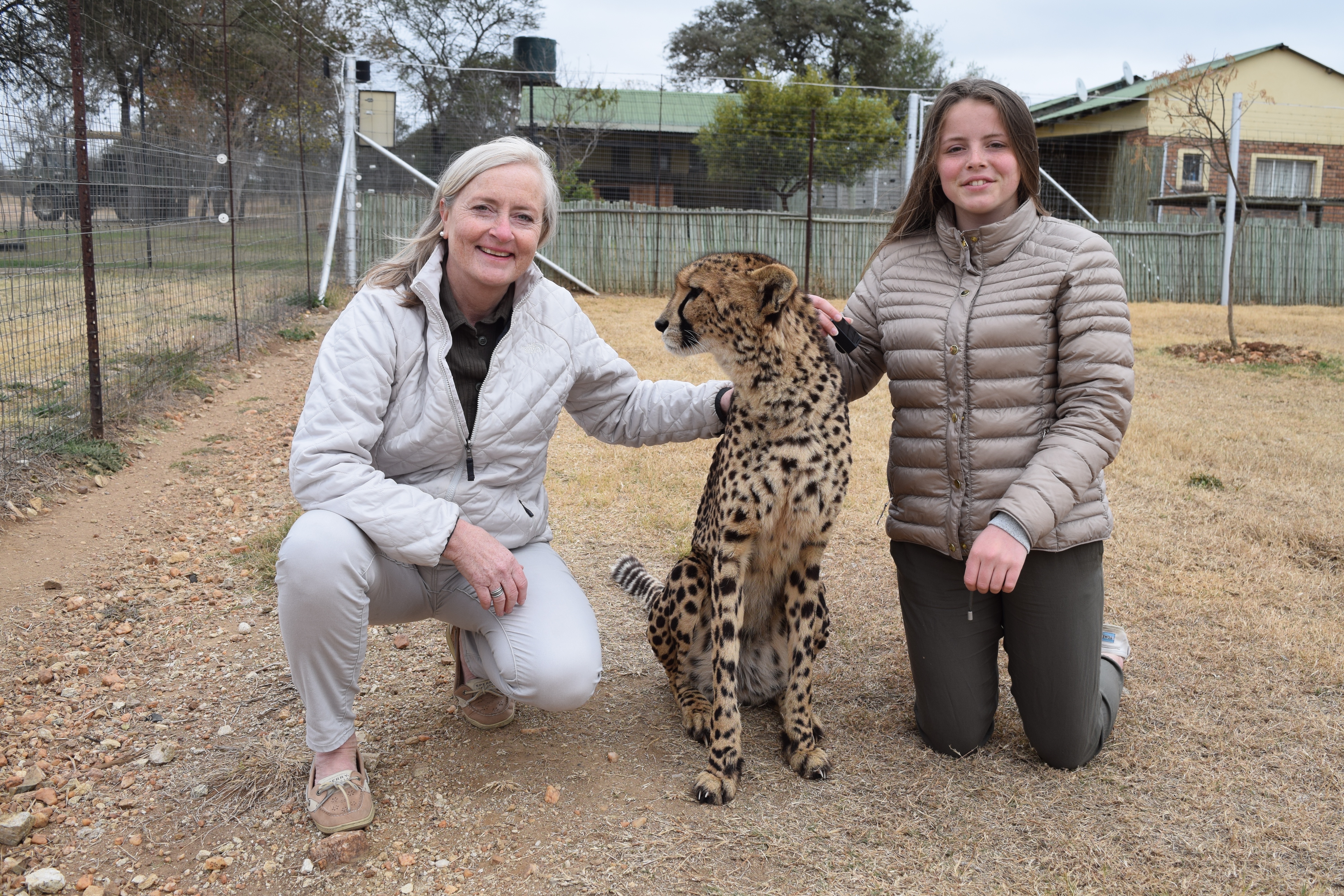
A meeting with a
cheetah at The Ranch – Polokwane


